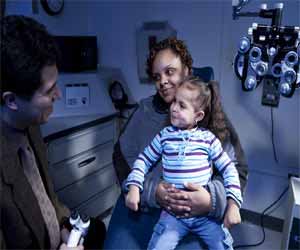The foundation of pediatric primary care in the U.S is the Well-Child visit, for identifying any health, social, developmental and behavioral issues.

In a year-long study led by Dr. Tumaini Coker, an assistant professor of pediatrics at Mattel Children's Hospital UCLA, researchers developed a new design for preventive health care for children from birth through age 3 from low-income communities. The team partnered with two community pediatric practices and a multi-site community health center in greater Los Angeles.
"The usual way of providing preventive care to young children is just not meeting the needs of the low-income families served by these clinics and practices," said Coker, who also is a researcher with the hospital's UCLA Children's Discovery and Innovation Institute. "Our goal was to create an innovative and reproducible — but locally customizable — approach to deliver comprehensive preventive care that is more family-centered, effective and efficient."
The researchers created two working groups of pediatric clinicians, staff, clinic leadership and parents to design the new models of care. One working group was at South Bay Family Health Care, and another working group combined the efforts of two pediatric practices, the YovanaBruno Pediatric Clinic in Duarte, California, and Wee Care Associates (led by Dr. Toni Johnson-Chavis), in Compton and Norwalk, California.
To design the new models of care, researchers gathered input from two sources. First, they solicited ideas from pediatricians, parents and health plan representatives about topics such as having non-physicians provide routine preventive care and using "alternative visit formats" — meeting with health care providers in alternative locations, meeting in groups as opposed to one-on-one, or getting providers' advice electronically instead of in person, for example. Secondly, the teams surveyed existing literature on alternative providers, locations and formats for well-child care.
Using that input, the clinic working groups developed four possible new models of care that it submitted for review by a panel of experts on preventive care practice redesign. Based on the panel's rankings, the working groups selected two models to implement and test — one for the private practices and the other for the community clinic. The private practices adopted a one-on-one visit format while the community clinic used a group-visit format, but the two models shared several characteristics:
- A trained health educator, or "parent coach," at each facility who relieves the physician of some of the more routine services and provides preventive health education and guidance, parenting education, and comprehensive but efficient preventive health services related to development, behavior and family psychosocial concerns.
- A considerably longer preventive care visit.
- A website that enables parents to customize their child's specific needs prior to their visit.
- Scheduled text messages or phone calls enabling the health care team to communicate with parents.
These findings were reported online June 16 in the journal Pediatrics.
Advertisement
"For clinics and practices that provide child preventive health care to families living in low-income communities, the process we used to develop the new models — or the new models themselves — could help them bring innovation to their own practices," Coker said.
Advertisement









